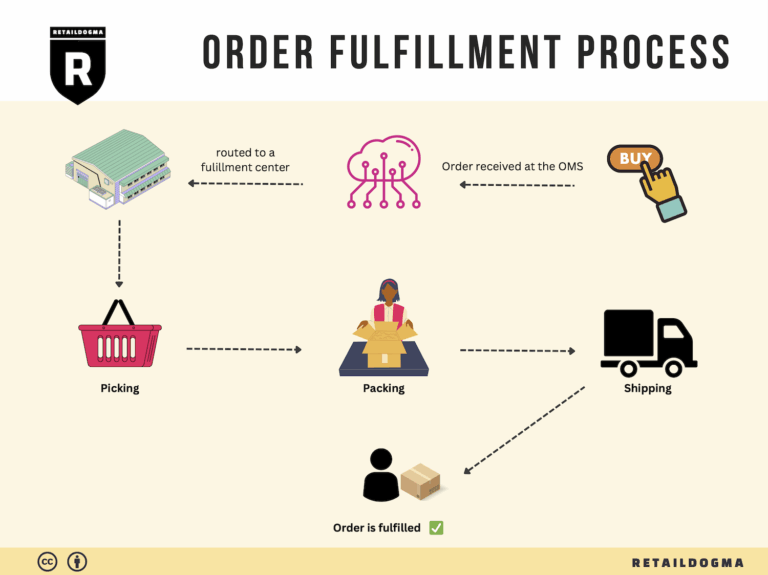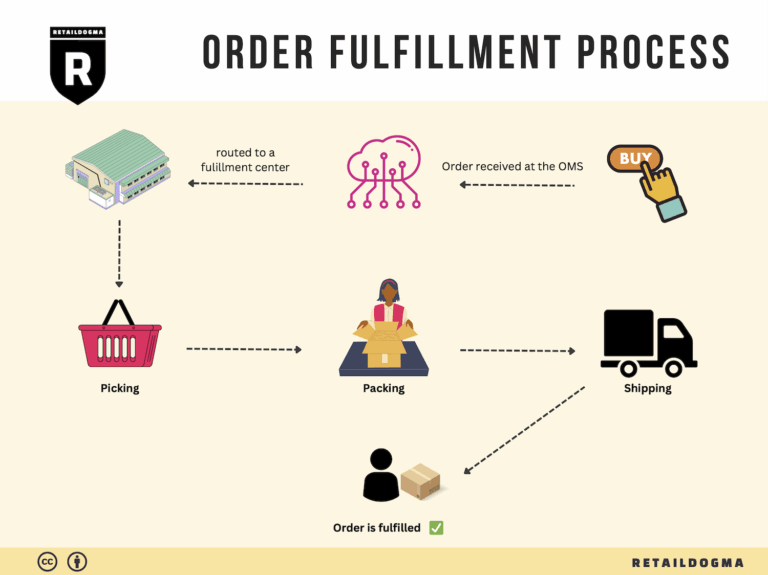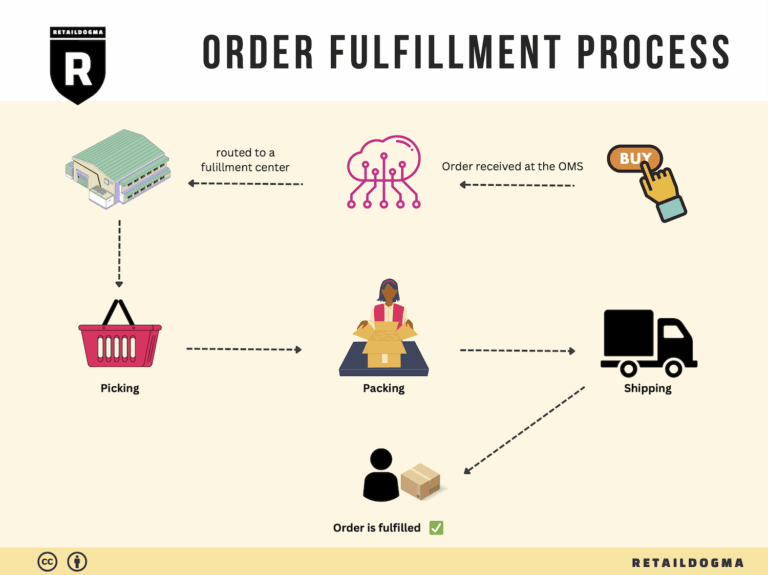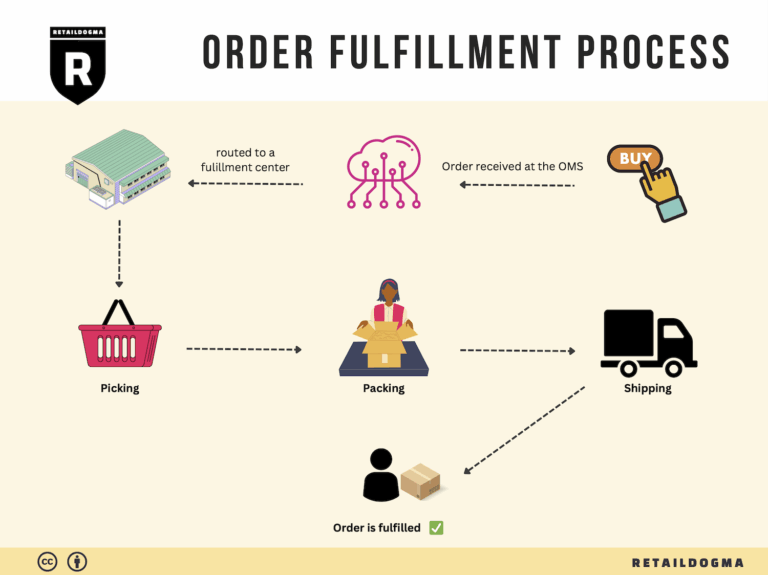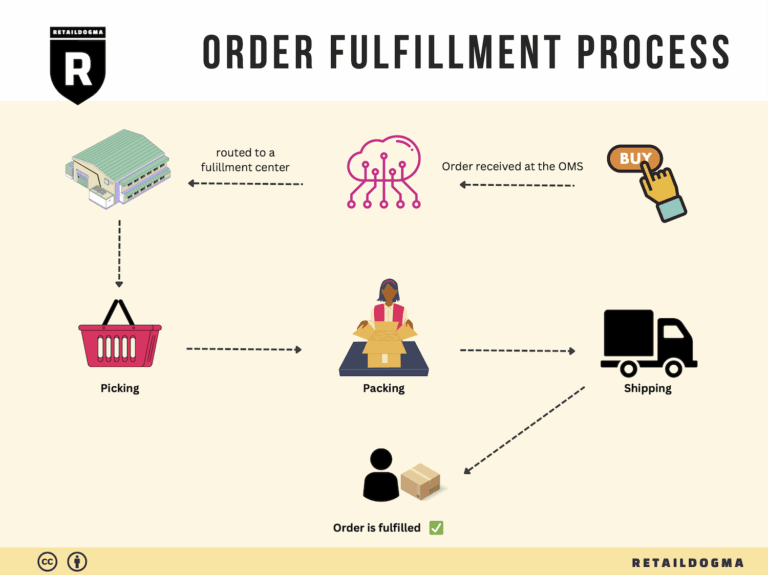How Order Fulfillment Works: A Step-by-Step Guide for Businesses
What is E-commerce Fulfillment? An Introduction for Growing Businesses
Growing an e-commerce business often brings with it a wave of logistical challenges. As sales increase, the once manageable tasks of packing and shipping orders can quickly become overwhelming. The excitement of attracting new customers can turn into stress when faced with the reality of order fulfillment. This is where understanding e-commerce fulfillment becomes essential.
Understanding E-commerce Fulfillment
At its core, e-commerce fulfillment is the process of getting a product from your inventory into the hands of your customers. This involves several key steps: receiving inventory, storing it, picking and packing orders, shipping them out, and handling returns. Efficient fulfillment is crucial for maintaining customer satisfaction, especially as consumers expect swift delivery and hassle-free returns.
Types of Fulfillment Models
In this guide, we will explore various fulfillment models that can help streamline your logistics operations. Two popular options are Fulfillment by Amazon (FBA) and third-party logistics (3PL) providers. Each model has its own set of advantages and disadvantages, making it essential for businesses to weigh their options based on their specific needs.
Core Fulfillment Services
We will also cover the core services that fulfillment partners typically offer. This includes inventory management, order processing, shipping logistics, and customer service. Understanding these services will empower you to select a partner that aligns with your business goals.
Choosing the Right Partner
Selecting the right fulfillment partner is a critical decision that can impact your business’s efficiency and customer experience. We will provide practical tips on what to look for in a fulfillment provider, including factors such as technology integration, scalability, and customer support.
Pricing Considerations
Finally, we will delve into the pricing structures associated with different fulfillment models. Understanding these costs will help you make informed decisions about your logistics strategy and ensure that your fulfillment operations remain profitable.
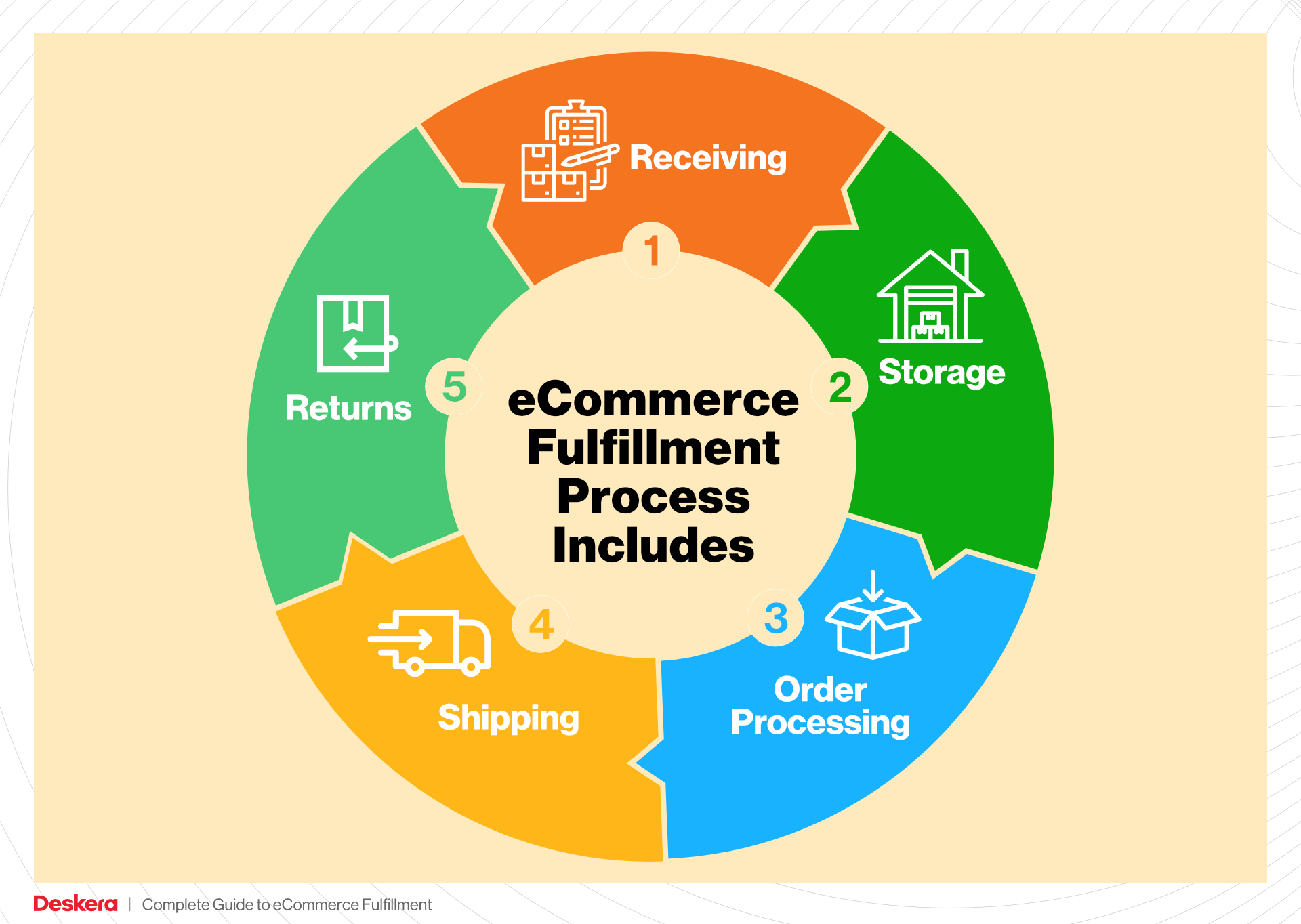
Goal of the Guide
The goal of this guide is to empower e-commerce businesses to make informed, strategic decisions about their fulfillment processes. By understanding the options available, the services offered, and the associated costs, you can optimize your logistics to support growth and enhance customer satisfaction. Whether you’re a seasoned entrepreneur or just starting out, this comprehensive resource will provide the insights you need to navigate the complexities of e-commerce fulfillment successfully.
What You’ll Learn In This Guide
- What is E-commerce Fulfillment? An Introduction for Growing Businesses
- The Order Fulfillment Process: From ‘Buy’ Button to Customer’s Door
- Comparing Fulfillment Models: In-House vs. 3PL vs. Dropshipping
- A Deep Dive into Amazon FBA: Pros, Cons, and Who It’s For
- Core Services Offered by Fulfillment Centers
- How to Choose a Fulfillment Partner: A 6-Point Checklist
- Understanding Fulfillment Pricing: A Breakdown of Common Fees
- Frequently Asked Questions (FAQs) about Fulfillment
- Conclusion: Is Outsourcing Fulfillment the Right Move for Your Business?
- Important Disclaimer
The Order Fulfillment Process: From ‘Buy’ Button to Customer’s Door
1. Receiving Inventory
The order fulfillment process begins with receiving inventory at the fulfillment center. When products arrive, they are checked against the shipping documents to ensure accuracy. This step is crucial because it establishes the initial inventory count and helps identify any discrepancies or damages. Each item is assigned a Stock Keeping Unit (SKU), a unique identifier that simplifies tracking and managing inventory.
Efficient receiving processes minimize delays and inaccuracies. A streamlined receiving operation allows businesses to quickly update their inventory levels, ensuring that products are available for immediate sale. Implementing a robust inventory management system can help automate this process, allowing for real-time updates and reducing the risk of human error.
2. Warehouse Storage
Once the inventory is received, it is stored in the warehouse. This step involves categorizing and placing items in designated locations based on various factors such as size, weight, and demand. Proper warehouse storage is essential for optimizing space and facilitating quick access to products when orders come in.
Utilizing a systematic approach to storage, such as the ABC inventory classification method, can help prioritize the storage of high-demand items closer to the packing area. This not only enhances efficiency but also speeds up the order fulfillment process. Effective warehouse management ensures that the right products are readily available, ultimately leading to faster delivery times and improved customer satisfaction.
3. Order Picking
As customers place orders, the next step is order picking. This process involves selecting items from the warehouse to fulfill specific customer orders. A pick list is generated, which provides a detailed outline of the items needed, their locations, and quantities.
Efficient order picking is vital as it directly affects fulfillment speed. Implementing different picking methods—such as batch picking, zone picking, or wave picking—can significantly enhance efficiency, depending on the volume and variety of orders. By optimizing this process, businesses can reduce the time taken to gather products, ensuring that orders are processed quickly and accurately.
4. Order Packing
After items are picked, they move to the order packing stage. This step involves carefully packaging products to ensure they arrive at the customer’s door in perfect condition. Proper packing not only protects items during transit but also reflects the brand’s commitment to quality and customer satisfaction.
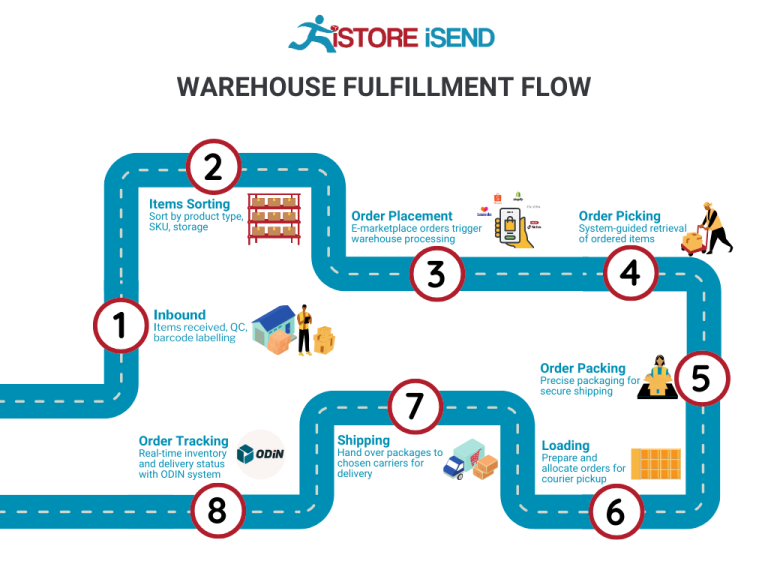
During this phase, it is essential to use appropriate packing materials and methods, including protective padding, to minimize the risk of damage. Additionally, businesses should consider using packing slips that include order details, which can enhance the customer’s experience by providing clarity on what they received. Efficient packing processes help streamline the workflow, reduce returns, and enhance customer loyalty.
5. Shipping & Delivery
The final step in the order fulfillment process is shipping and delivery. Once orders are packed, they are labeled and prepared for dispatch. This includes selecting the appropriate shipping method based on factors such as delivery speed, cost, and destination.
This step is crucial because it directly impacts the customer’s experience. Quick and reliable shipping options, including same-day or next-day delivery, can significantly enhance customer satisfaction. Businesses can utilize shipping software to automate label printing and track shipments, ensuring transparency throughout the delivery process. Effective management of shipping logistics is essential for maintaining a competitive edge in the e-commerce landscape.
In conclusion, understanding and optimizing each step of the order fulfillment process—from receiving inventory to shipping and delivery—is critical for e-commerce businesses looking to scale effectively. By focusing on efficiency and accuracy at each stage, businesses can enhance customer satisfaction, reduce operational costs, and ultimately drive growth.
Comparing Fulfillment Models: In-House vs. 3PL vs. Dropshipping
Fulfillment Models Overview
When it comes to scaling an e-commerce business, selecting the right fulfillment model is crucial. Each model offers unique advantages and disadvantages that can significantly impact operational efficiency, cost, and customer satisfaction. Below is a comparison of the three primary fulfillment models: In-House Fulfillment, Third-Party Logistics (3PL), and Dropshipping.
| Model | Who Handles Inventory | Best For (Business Stage) | Key Advantage | Key Disadvantage |
|---|---|---|---|---|
| In-House Fulfillment | The business itself | Startups to established businesses | Full control over inventory and processes | Higher overhead costs, requires space and staff |
| Third-Party Logistics (3PL) | A third-party provider | Growth stage businesses | Scalability and expertise in logistics | Less control over fulfillment and potential service inconsistency |
| Dropshipping | Supplier or manufacturer | New and small businesses | Low upfront investment and no inventory risk | Lower profit margins and reliance on supplier reliability |
In-House Fulfillment
In-house fulfillment refers to a model where a business manages all aspects of inventory storage, order processing, and shipping internally. This approach is often favored by startups that wish to maintain complete control over their operations. Having an in-house team means you can tailor your processes to fit your specific needs, ensuring high-quality handling of products and customer service.
However, the in-house model comes with significant challenges. It requires substantial investments in warehouse space, staffing, and logistics technology. As your business grows, the complexities of managing inventory, order fulfillment, and shipping can become overwhelming. Additionally, overhead costs can escalate quickly, particularly if you are dealing with a fluctuating volume of orders. While this model provides control and customization, it can also lead to inefficiencies and increased operational burdens as demand scales.
Third-Party Logistics (3PL)
Third-party logistics (3PL) involves outsourcing your fulfillment operations to a specialized provider. This model is particularly beneficial for businesses in their growth stage, as it allows them to leverage the expertise and infrastructure of established logistics companies. 3PL providers handle everything from inventory storage to order processing, shipping, and even returns management. This can free up your internal resources, allowing you to focus on core business activities like marketing and product development.
One of the key advantages of utilizing 3PL is scalability. As your business grows, your logistics partner can easily adjust to your changing needs without the hassle of expanding your own operations. However, outsourcing fulfillment also means relinquishing some control over your processes. Businesses may face challenges related to service consistency and the potential for miscommunication with their 3PL partner. Additionally, the costs associated with 3PL services can vary, so it’s crucial to carefully evaluate potential partners and their pricing structures to ensure profitability.
Dropshipping
Dropshipping is a fulfillment model where a business sells products it does not physically hold in stock. Instead, when an order is placed, the business purchases the item from a third-party supplier who then ships it directly to the customer. This model is particularly attractive for new and small businesses due to its low upfront investment and minimal financial risk. Entrepreneurs can launch their stores without the burden of managing inventory or warehousing costs, making it easier to test different product lines.
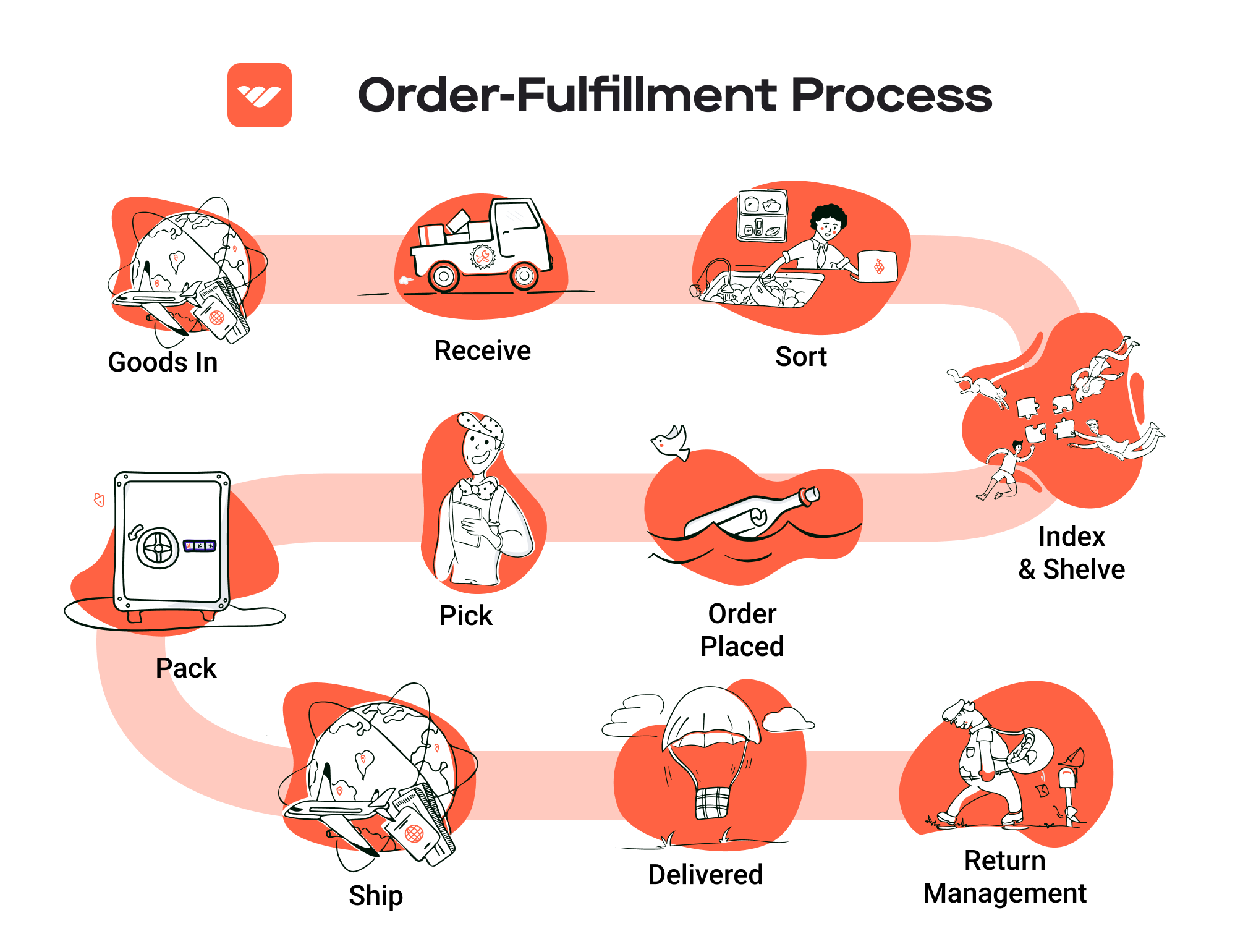
Despite its many advantages, dropshipping has notable drawbacks. Profit margins tend to be lower because the business often relies on wholesale pricing from suppliers. Furthermore, the reliance on third-party suppliers introduces risks related to inventory availability, shipping times, and product quality. If a supplier fails to deliver on time or provides subpar products, your business’s reputation may suffer. Therefore, while dropshipping can be an excellent entry point for aspiring e-commerce entrepreneurs, it requires careful supplier selection and management to ensure customer satisfaction.
Conclusion
Choosing the right fulfillment model depends on your business’s specific needs, stage of growth, and operational capabilities. In-house fulfillment offers control but comes with higher costs and resource demands. Third-party logistics provide scalability and expertise, though they require a degree of trust and coordination. Dropshipping presents a low-risk entry into e-commerce, but it necessitates careful management of supplier relationships to maintain quality and customer satisfaction. By understanding the strengths and weaknesses of each model, e-commerce business owners can make informed decisions that align with their growth strategies and operational goals.
A Deep Dive into Amazon FBA: Pros, Cons, and Who It’s For
Understanding Fulfillment by Amazon (FBA)
Fulfillment by Amazon (FBA) is a service that allows e-commerce sellers to leverage Amazon’s extensive logistics network for storing, packaging, and shipping their products. By using FBA, sellers send their inventory to Amazon’s fulfillment centers, where Amazon takes care of the entire fulfillment process, from order processing to customer service. This model enables sellers to focus on other critical aspects of their business, such as marketing and product development, while relying on Amazon’s infrastructure to handle logistics efficiently.
When a customer places an order for a product fulfilled by Amazon, the process is seamless. Amazon picks the product from its inventory, packs it, and ships it directly to the customer. Additionally, FBA products are eligible for Amazon Prime, which means they can offer customers the convenience of fast, free shipping. This capability significantly enhances the attractiveness of listings to potential buyers.
Pros of Using FBA
-
Prime Eligibility: One of the standout benefits of using FBA is access to Amazon Prime. Products fulfilled by Amazon are marked with the Prime badge, making them more appealing to the millions of Amazon Prime members. Prime members often prefer products with this badge due to the promise of fast shipping and easy returns, which can lead to increased sales.
-
Customer Trust: Customers trust Amazon’s brand and its customer service. When they see that a product is fulfilled by Amazon, they feel confident in their purchase, knowing that they can expect reliable shipping and customer support. This trust can be a significant advantage over competitors who do not use FBA.
-
Multi-Channel Fulfillment: FBA allows sellers to fulfill orders not just from Amazon but also from other sales channels. This means you can utilize Amazon’s logistics capabilities to manage orders from your own e-commerce website or other platforms, thereby streamlining your fulfillment processes across multiple channels.
-
Time Savings: By outsourcing fulfillment to Amazon, sellers save considerable time and resources that would otherwise be spent on packing, shipping, and managing returns. This efficiency allows them to concentrate on growing their business rather than getting bogged down in logistics.
-
Returns Management: Amazon handles all customer service issues related to FBA orders, including returns. This can relieve sellers of the burden of managing returns themselves, simplifying the post-sale experience.
Cons of Using FBA
-
High Fees: While FBA offers numerous advantages, the associated costs can be significant. FBA fees, which can account for 30-40% of the product price, include storage fees, fulfillment fees, and referral fees. Sellers need to perform a thorough cost analysis to ensure that their profit margins remain viable when using FBA.
-
Strict Inventory Rules: Amazon imposes strict rules on inventory management, including limits on storage capacity based on sales history and Inventory Performance Index (IPI) scores. This can make it challenging for sellers to scale their inventory without incurring additional fees or restrictions.
-
Commingling Risks: FBA operates on a commingling model, meaning that inventory from different sellers can be mixed together in Amazon’s warehouses. While this can lead to faster shipping times, it also poses risks. For example, if a customer receives a defective or damaged item from another seller, it could negatively impact your seller rating, even if it was not your product.
-
Higher Return Rates: The ease of returning items through Amazon can lead to higher return rates compared to other sales channels. This is particularly relevant for certain categories of products where returns are more common, impacting overall profitability.
-
Loss of Control: By relying on Amazon for fulfillment, sellers relinquish some control over how their products are packaged and shipped. This can be a concern for those who have specific branding or packaging requirements that are important to their business identity.
Who is FBA Best For?
FBA can be a game-changer for many types of e-commerce businesses, but it’s not a one-size-fits-all solution. Here are some scenarios where FBA might be the best choice:
-
Small and Lightweight Products: Sellers offering small, lightweight items often find that FBA fees are manageable, allowing them to maintain healthy profit margins.
-
Home-Based Businesses: Entrepreneurs who operate from home without the space for inventory storage and order fulfillment can greatly benefit from FBA’s warehousing capabilities.
-
Time-Strapped Sellers: Business owners who lack the time or resources to manage shipping and customer service can focus on their core business activities by outsourcing these tasks to Amazon.
-
Brands Seeking Prime Eligibility: If your goal is to tap into the vast Amazon Prime customer base, FBA is essential for gaining that visibility and trust.
-
Multi-Channel Sellers: Businesses that sell on multiple platforms can streamline their logistics by using FBA for all orders, simplifying inventory management and fulfillment.
Conversely, FBA may not be suitable for those who sell large or heavy products, desire complete control over their fulfillment process, or have the infrastructure in place to handle logistics independently. Understanding your business model and customer needs is crucial in determining whether FBA is the right fit for you.
In conclusion, FBA provides a powerful solution for scaling e-commerce businesses, but it’s essential to weigh its advantages against potential drawbacks to make an informed decision that aligns with your business goals.
Core Services Offered by Fulfillment Centers
Inventory Management & Warehousing
Inventory management and warehousing form the backbone of any efficient e-commerce operation. Fulfillment centers provide dedicated storage space for a seller’s products, ensuring that items are organized and readily available for order fulfillment. This service encompasses tracking inventory levels, managing stock replenishment, and optimizing storage space to accommodate varying volumes of products.
Benefits:
1. Scalability: As your business grows, so does your inventory. Fulfillment centers allow you to scale your storage needs without the overhead costs associated with leasing a warehouse or hiring staff to manage it.
2. Reduced Risk of Stockouts: With sophisticated inventory management systems, fulfillment centers help prevent stockouts by notifying sellers when inventory levels are low, allowing for timely reordering.
3. Efficient Space Utilization: Fulfillment centers are designed to maximize storage efficiency, using advanced shelving and inventory management techniques, which can lead to cost savings on storage.
4. Multi-Channel Integration: Many fulfillment centers offer the ability to manage inventory across various sales channels, including Amazon, eBay, and your own e-commerce site, providing a holistic view of stock levels.
Pick and Pack Services
Pick and pack services are crucial to the order fulfillment process, involving the selection of products from inventory and packaging them for shipment. Fulfillment centers utilize technology-driven systems to streamline this process, ensuring accuracy and speed in fulfilling orders.
Benefits:
1. Speed and Efficiency: Fulfillment centers employ optimized workflows that significantly reduce the time taken to pick and pack orders, allowing for quicker dispatch and improved customer satisfaction.
2. Accuracy: Automated systems and trained staff minimize errors in order fulfillment, ensuring that customers receive the correct items. This accuracy is vital for maintaining a positive brand reputation and customer loyalty.
3. Customization: Many fulfillment centers offer customizable packaging options, allowing businesses to enhance their brand presence through branded boxes, inserts, and packing materials.
4. Handling of Complex Orders: Whether it’s a single item or a bulk order, fulfillment centers can manage complex pick and pack requests, including mixed SKU orders, which can be challenging for businesses to handle in-house.
Kitting and Assembly
Kitting and assembly services involve grouping various products together to create a single, bundled offering. This can include assembling products that require multiple components or packaging items together as gift sets. Fulfillment centers often provide this service as part of their offering to enhance product offerings and streamline the shipping process.
Benefits:
1. Enhanced Product Offerings: Kitting allows businesses to create unique bundled products that can increase perceived value and attract more customers. This can lead to higher sales and improved customer satisfaction.
2. Streamlined Operations: By outsourcing kitting and assembly, businesses can focus on their core activities, such as marketing and product development, rather than the labor-intensive process of assembly.
3. Cost-Effective: Fulfillment centers can often perform kitting and assembly at a lower cost than businesses can achieve on their own, due to economies of scale and specialized expertise.
4. Flexibility: As market demands change, fulfillment centers can quickly adapt to new kitting requirements, enabling businesses to respond swiftly to customer preferences and seasonal trends.
Returns Management (Reverse Logistics)
Returns management, often referred to as reverse logistics, is a critical component of the fulfillment process. It involves handling returned items efficiently and effectively, ensuring that they are processed quickly, either restocked or disposed of properly, depending on their condition.
Benefits:
1. Customer Satisfaction: A streamlined returns process enhances customer experience, as it allows for easy returns, which can improve customer loyalty and repeat purchases.
2. Cost Control: Efficient returns management minimizes losses associated with returned products. Fulfillment centers can quickly assess the condition of returned items and decide on their best course of action, whether that’s restocking, refurbishing, or liquidation.
3. Data Insights: By analyzing return data, businesses can identify patterns and reasons for returns, allowing them to make informed decisions about product quality, marketing strategies, and inventory management.
4. Operational Efficiency: Outsourcing returns management to fulfillment centers frees up internal resources, allowing businesses to focus on core operations while ensuring that returns are handled professionally and efficiently.
In conclusion, utilizing the core services offered by fulfillment centers can significantly enhance the efficiency and effectiveness of an e-commerce business. By leveraging their expertise in inventory management, order processing, kitting, and returns management, businesses can streamline operations, reduce costs, and ultimately provide a better experience for their customers. This allows entrepreneurs and operations managers to focus on strategic growth and scaling their operations effectively.
How to Choose a Fulfillment Partner: A 6-Point Checklist
Location & Warehouse Network
Importance: The geographical location of your fulfillment partner’s warehouses can significantly impact shipping times and costs. Ideally, you want a partner with warehouses located near your major customer bases to ensure quicker deliveries and reduced shipping expenses.
Questions to Ask:
– Where are your warehouses located, and how does that align with my target markets?
– Do you have a network of warehouses that can help me reach my customers quickly?
– Can you provide insights into your average shipping times to various regions?
Technology & Integrations
Importance: In today’s digital landscape, having a robust technological framework is crucial for seamless operations. Your fulfillment partner should offer advanced technology that integrates well with your e-commerce platform, inventory management systems, and other tools you use.
Questions to Ask:
– What technology do you use for order management, inventory tracking, and shipping?
– How easily can your systems integrate with my existing e-commerce platform (e.g., Shopify, WooCommerce, Amazon)?
– Do you offer real-time tracking for shipments, and how is this communicated to my customers?
Specializations (e.g., Cold Storage, Oversized Items)
Importance: Depending on the nature of your products, you may need a fulfillment partner with specific capabilities, such as cold storage for perishables or expertise in handling oversized items. Ensuring that your partner can cater to your specific needs will streamline operations and minimize potential issues.
Questions to Ask:
– Do you have experience handling my specific type of products (e.g., food items, electronics, oversized goods)?
– What special facilities or equipment do you have to manage these types of products?
– Can you provide case studies or references from businesses with similar needs?
Scalability & Capacity
Importance: As your business grows, your fulfillment needs will evolve. Partnering with a fulfillment provider that can scale with your business ensures that you won’t face bottlenecks or have to switch providers as your volume increases.
Questions to Ask:
– What is your current capacity for handling orders, and how quickly can you scale if my volume increases?
– Have you worked with companies that have experienced rapid growth? How did you support them?
– What is your policy on seasonal fluctuations in order volume, and how do you manage peak times?
Pricing and Contracts
Importance: Understanding the pricing structure and contract terms is vital to avoid unexpected costs that can eat into your margins. Transparency in pricing will help you make informed decisions and maintain profitability.
Questions to Ask:
– Can you provide a detailed breakdown of your pricing structure, including all potential fees (storage, pick and pack, shipping)?
– Are there any minimum order quantities or commitments required in the contract?
– How often do you review pricing, and what factors could lead to price changes?
Customer Support & Reviews
Importance: Reliable customer support is essential for addressing any issues that may arise during the fulfillment process. Additionally, checking reviews and testimonials can provide insight into the partner’s reliability and service quality.
Questions to Ask:
– What level of customer support do you offer, and how can I reach you in case of emergencies?
– Can you provide references or case studies from current or previous clients?
– What have customers said about your service in online reviews, and how do you address negative feedback?
Conclusion
Choosing the right fulfillment partner is a critical decision that can significantly influence your e-commerce business’s success. By using this checklist, e-commerce business owners, operations managers, and entrepreneurs can systematically evaluate potential partners and ensure that they align with their operational needs and growth objectives. Taking the time to ask the right questions and thoroughly vet potential partners will lead to more informed decisions, ultimately contributing to your business’s scalability and profitability.
Understanding Fulfillment Pricing: A Breakdown of Common Fees
Initial Setup Fees
When you begin using Fulfillment by Amazon (FBA), there may be initial setup fees involved. These fees typically cover the costs associated with creating your seller account and integrating your inventory into Amazon’s system. While Amazon does not charge a direct fee for setting up an FBA account, you may incur costs related to preparing your products for shipment to their fulfillment centers, including packaging materials and any necessary labeling.
It’s essential to consider the potential costs of onboarding any third-party services or software that may assist with managing your FBA account, such as inventory management tools or analytics platforms. These tools can help streamline your operations but will add to your initial investment.
Receiving Fees
Receiving fees are charged when Amazon takes possession of your products at their fulfillment centers. This fee is calculated based on the number of units received and can vary depending on the size and weight of your products. For instance, standard-sized items may incur a lower fee compared to oversized items.
Understanding this fee is crucial for budgeting your overall fulfillment costs, as it can fluctuate based on your shipment size and frequency. Additionally, if you send a large shipment, Amazon may offer discounted rates on receiving fees, so it’s worthwhile to explore economies of scale.
Storage Fees (per pallet/bin)
Storage fees are charged for the space your inventory occupies in Amazon’s warehouses. These fees are typically calculated on a monthly basis and can vary depending on the time of year. Amazon often charges higher fees during peak seasons, such as the holiday shopping period, to encourage sellers to manage their inventory levels effectively.
The storage fees are categorized into two types: standard storage fees, which apply to items stored for less than six months, and long-term storage fees for items stored longer than six months. To minimize storage costs, sellers should monitor their inventory turnover rates and consider implementing inventory management strategies that include regular audits and promotions to move slower-selling items.
Pick & Pack Fees (per item/order)
Pick and pack fees are incurred every time an order is fulfilled through FBA. This fee covers the labor involved in picking items from the shelves and packing them for shipment. The cost is typically calculated per item, with additional charges for oversized items or special handling requirements.
Sellers should be mindful of how their product assortment affects these fees. For example, if you sell a large number of SKUs (stock-keeping units), the cumulative pick and pack fees can add up quickly. Optimizing your product range by focusing on best-sellers can help reduce overall fulfillment costs.
Shipping Fees
Shipping fees are incurred when Amazon ships your products to customers. These fees are calculated based on the size and weight of the package, as well as the shipping destination. Amazon offers discounted shipping rates for FBA sellers, which can significantly reduce your overall shipping costs compared to using standard carriers.
It’s crucial to understand how shipping fees are structured, especially when pricing your products. Sellers may want to factor these costs into their product pricing strategy to maintain profitability. Additionally, consider the implications of offering free shipping; while it can enhance customer appeal, it may require careful calculation to ensure that your margins remain intact.
Tips for Getting an Accurate Quote
To obtain an accurate quote for your fulfillment needs, consider the following strategies:
-
Use Amazon’s FBA Calculator: Amazon provides a free FBA calculator that allows sellers to input their product details and receive an estimate of all associated fees, including storage, shipping, and pick & pack fees.
-
Evaluate Your Inventory: Regularly assess your inventory turnover and storage levels to anticipate potential storage fees and avoid long-term storage penalties.
-
Compare Costs: If you’re considering multiple fulfillment options, compare the overall costs and services offered by Amazon FBA against other third-party fulfillment providers. Take into account the total cost of ownership, including shipping, handling, and storage.
-
Consult with Experts: Engaging with e-commerce consultants or utilizing resources from platforms like Jungle Scout can provide insights into optimizing your fulfillment strategy and minimizing costs.
-
Monitor Changes: Stay informed about any changes to Amazon’s fee structure, which can occur annually or seasonally. Being proactive about these changes can help you adjust your pricing and inventory strategies accordingly.
By understanding these common fulfillment pricing models and implementing strategies to manage them effectively, e-commerce businesses can enhance their profitability and streamline their operations.
Frequently Asked Questions (FAQs) about Fulfillment
1. What is Fulfillment by Amazon (FBA)?
Fulfillment by Amazon (FBA) is a service that allows sellers to store their products in Amazon’s fulfillment centers. Amazon takes care of storage, order processing, shipping, returns, and customer service. This enables sellers to focus on other aspects of their business while leveraging Amazon’s logistics capabilities.
2. How do I get started with FBA?
To start using FBA, create an Amazon seller account and set up a shipping plan through Amazon Seller Central. Once your products are packaged according to Amazon’s requirements, send them to an Amazon fulfillment center. After Amazon receives and processes your inventory, your products will become eligible for Prime shipping.
3. What are the costs associated with FBA?
FBA involves several fees, including referral fees (typically around 15% of the sale price), fulfillment fees based on product size and weight, and storage fees for keeping your inventory in Amazon’s warehouses. It’s crucial to calculate these fees to determine your product’s profitability.
4. What are the advantages of using FBA?
The benefits of FBA include access to Amazon Prime customers, efficient order processing, automated customer service and returns handling, and the ability to reach a global audience without managing logistics. This can significantly boost sales and enhance customer trust in your brand.
5. What are the disadvantages of FBA?
While FBA offers many advantages, there are drawbacks such as potentially high fees, inventory storage costs, and limits on how much inventory you can send based on your sales history. Additionally, the ease of returns on Amazon may lead to higher return rates for sellers.
6. What’s the difference between a warehouse and a fulfillment center?
A warehouse primarily serves as a storage space for inventory, whereas a fulfillment center is designed to facilitate the entire order fulfillment process, including storage, picking, packing, shipping, and managing returns. Fulfillment centers often integrate with e-commerce platforms to streamline operations.
7. What is a Third-Party Logistics Provider (3PL)?
A Third-Party Logistics Provider (3PL) is a service that manages logistics and fulfillment operations for businesses. Unlike FBA, which is specific to Amazon, a 3PL can handle shipping, warehousing, and distribution for various sales channels, allowing businesses to scale without investing in their logistics infrastructure.
8. Can I use FBA for products sold outside of Amazon?
Yes, FBA offers a Multi-Channel Fulfillment (MCF) option, allowing you to use Amazon’s logistics services to fulfill orders from other sales channels such as your own e-commerce website or other marketplaces. This provides a unified fulfillment solution across different platforms.
9. How do I manage inventory with FBA?
Effective inventory management with FBA involves monitoring your inventory levels through Amazon Seller Central. Utilize Amazon’s tools to analyze sales trends, set restock alerts, and manage shipments to avoid excess storage fees. Regularly assess your inventory performance and adjust your product offerings accordingly.
10. Is FBA suitable for all types of products?
FBA can be a great fit for many sellers, particularly those with small, lightweight products. However, it may not be ideal for large or heavy items due to higher fulfillment and storage fees. Assess your product types, margins, and sales volume to determine if FBA aligns with your business model.
Conclusion: Is Outsourcing Fulfillment the Right Move for Your Business?
Evaluating the Benefits of Outsourcing Fulfillment
Outsourcing your fulfillment can be a transformative strategy for your e-commerce business, particularly as you scale. One of the most significant advantages is the time savings it offers. By entrusting fulfillment to a specialized partner, you free up valuable hours that can be redirected towards strategic initiatives, such as product development, marketing, and customer engagement. This allows you to focus on what truly matters—growing your business.
Scalability is another compelling reason to consider outsourcing. As your sales volume increases, so does the complexity of managing inventory, shipping logistics, and customer service. A fulfillment partner can easily adapt to your changing needs, enabling you to expand your operations without the headache of additional warehouse space or staffing. This flexibility can be crucial during peak seasons or when launching new products.
Moreover, leveraging the expertise of a fulfillment service can enhance your operational efficiency. These partners often come equipped with advanced technology and logistics solutions that optimize the shipping process, reduce errors, and improve delivery times. This not only enhances customer satisfaction but also strengthens your brand’s reputation in a competitive marketplace.
However, selecting the right fulfillment partner is critical to your success. Conduct thorough research and consider factors such as reliability, technology capabilities, and customer service. A poor choice can hinder your growth rather than propel it.
As a next step, take the time to audit your current shipping and fulfillment processes. Evaluate whether your existing setup is meeting your business goals or if an outsourcing solution could provide the strategic advantage you need. Making the right choice in fulfillment can significantly impact your bottom line and overall success in the e-commerce landscape.
Important Disclaimer
⚠️ Important Disclaimer
The information in this guide is for educational purposes. Fulfillment services, pricing, and platform features change frequently. Always conduct your own due diligence and consult with providers directly before making business decisions.

